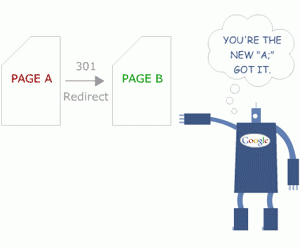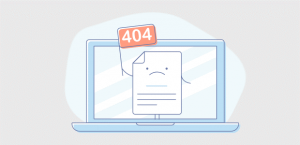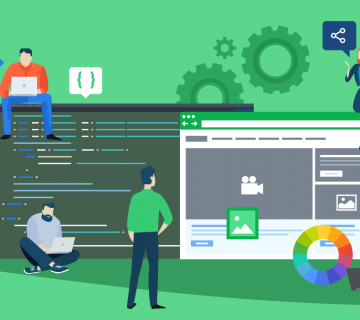We all know by heart how important SEO is, and how much the fate of a website depends on it. Rules of SEO had changed over time, and it is not rare that some important areas get overlooked. Such cases lead to traffic reduce, lower-ranking, and poor performance. Images on your website might not be optimized for search engines, and their role goes far beyond being just illustrations in charge to attract visitors and invite them to land on the page.
The importance of static URLs and unique pages is often overlooked. Mentioned areas are a kind of obvious, but building the SEO ranking is an ongoing process you have to keep in mind all the time while refining your website. That means that there is not any part of the website that is not important for SEO, redirects and 404 included.
What Are Redirects?
Redirects are set of instructions telling the browser that some content changed the location. They are helping users to easily find what they were looking for without even noticing that the URL has changed. While overhauling, redesigning, or altering the website structure another way (changing URL’s domain name, for example), some pages have to be redirected without compromising your organic traffic.
Otherwise, you risk having many broken links on your website. Redirects work like a detour, and there is more than one type available. 301 is the most common, especially during a site migration. It primarily prevents SEO to drop and preserves your ranking. Plan every action, and ensure that your website runs uninterruptedly while you are improving it.
Yet, if you have made a mistake and overlooked this important aspect of SEO, do not worry! There is an option to fix it in short and continue working as nothing has happened. 301 Redirects plugin for WordPress was built to be the right-hand assistant to common users who are not empowered with codding skills. It is user-friendly, easy to install and configure – an excellent tool for building new sites or repairing links. Your content will not be lost in search engine results. There are no unrepairable mistakes. Whether if you have overlooked that the redirects are an important part of the SEO, you can fix it in minutes and continue running the website uninterruptedly.
301 redirect protocol is fast, and it does not affect the website’s speed. It has also the opportunity to group multiple links under the new URL, but the reversed process is not possible. Moz reports that up to 99% of the organic traffic can be transferred from the original URL to the redirected page. However, it is important to think about the contexts to keep their relevance. There is no precise information on how it works with redirecting multiple pages.

What is 404?
404 means that a webpage does not exist, and there are not any instructions on how to process the request and help users to find what they are looking for. It is an error message. If it is needed, the best is to set up a 404 page. In this way, will you allow the users to continue searching for the resource instead of leaving the site? It happens quite often that the users cannot access some pages, and you have to be prepared when the time comes.
There is a wide range of reasons why does it happen, from a temporary outage with the host to an issue with the URL. When the common visitor encounters a generic 404 page, they might consider the whole website down and continue searching in your competition. A much better option is to use a custom 404 page to provide important information and retain visitors. Allow access to other pages and let them know that they are in the right place. But where is the connection with SEO? It lies in the keywords you can repeat on a 404 page inside general information. It helps to preserve SEO ranking.
Status code 404 is common on the Internet. The server pulls out the 404 when a specific URL is not existing. The design of this page is not appealing, and it is strongly recommended to use a custom web design for the one important reason – better users’ experience. Not finding what one was looking for is not pleasant, but the designed 404 page makes a much better impression. Besides that, it can include CTA and links to other relevant pages which will stop visitors from leaving the page. In this way, you can direct more organic traffic to main pages or other relevant categories. The search bar is an excellent idea to add more functionality to 404 pages. Custom designs of 404 are available in plugins for WordPress. They are easy-to-use and fast.

Google’s Search Console helps to find 404 errors, but if you are looking for broken links on your website, you have a lot of SEO tools at disposal. It is a common opinion that 404 hurts SEO rankings, but it is a regular part of the web, and it can be fixed. In some cases, such pages may be useful and boost SEO. Old or deleted pages can be 301 redirected to a new and relevant page, but 404 can be after a while redirected to the homepage.
Google does not index any none-existing pages, but it does not have an impact on the whole website. Only indexed pages get a rank! The best advice is to make sure that pages on your websites exist or are properly redirected. It is all about the maintenance of the website and instead of having worries to which extent 301 and 404 have made damage, treat them as a normal part of web operation and take advantage of how they can improve the traffic and have the purpose. The point is to create good users’ experience and keep equity of each page.
If there is a problem, act immediately, and resolve it. With the help of the right tools, it is not complicated and does not require much time while the results are immediately visible in preserving traffic and improving SEO.

